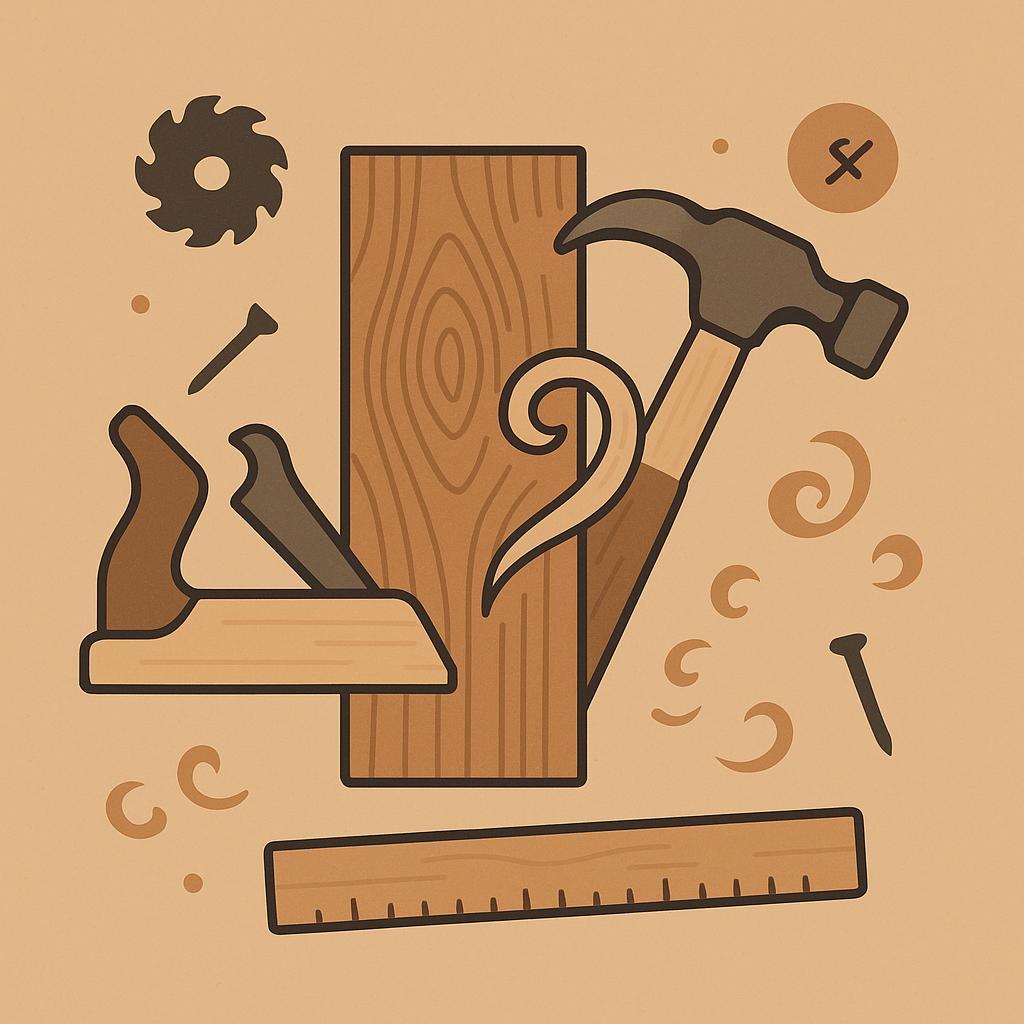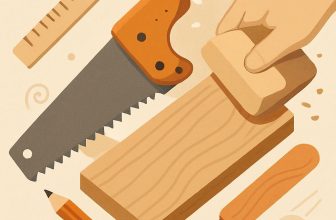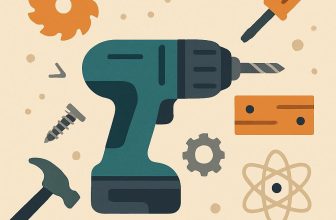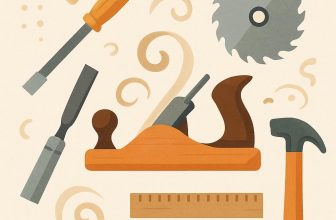
What if the simplest plan you jot on a scrap of paper could unlock a lifetime of handmade projects? Mastering the Basics: Woodworking Skills for Beginners shows how small, intentional steps build confidence before you tackle bigger pieces. The topic matters because safety, accuracy, and satisfaction hinge on solid fundamentals-without them, even aspiring ideas stall at the bench. In this article, you'll learn essential measuring and marking, tool handling and safety, reading plans, selecting materials, and basic joints. by the end, you'll approach every project with a clear method, steady hands, and a bookshelf full of finished work.
Building a Solid Foundation for Beginner Woodworkers
Solid woodworking starts long before the first cut. It begins with a safe, well-lit workspace, a sturdy workbench, and a simple routine that keeps focus. Clear the area of clutter, organize tools within easy reach, and set up dust control if possible. Establish a habit of wearing basic safety gear and securing stock with clamps before you touch a blade. When your shop supports calm, deliberate work, you reduce mistakes and build confidence with every session.
Precision grows from measurement discipline. Double-check everything you mark and cut. Use a tape measure for length, a combination square for angles, and a marking knife or pencil for crisp lines. Mark once, measure twice, and clamp the stock to prevent movement. Practise on scrap stock to dial in blade height, line visibility, and feeding steadiness. Those small, deliberate steps today translate into cleaner joints and less waste tomorrow.
| Tool or Skill | What it's for | Beginner Tip |
|---|---|---|
| Measuring tape | Length checks and layout | Measure twice, cut once; verify with a second measurement |
| Combination square | 90° and 45° references | Check stock edges for true surfaces before cutting |
| Marking knife | Sharp, accurate cut lines | Light scoring helps guide saws and planes |
Foundational tool knowledge and maintenance matter as much as technique. Start with a compact starter kit: a handsaw or backsaw, sharp chisels, a smoothing plane, a square, marking tools, and a few clamps. Keep blades sharp, corners clean, and storage dry. Regularly wipe dust from surfaces, hone edges, and store tools in a logical layout so you can find what you need without squinting at clutter.A little upkeep pays off in smoother cuts and safer operation.
Hands-on progression builds confidence. Begin with stock readiness: flatten faces, joint edges, and establish a straight reference edge. Progress to small, safe joints like a simple box or frame, then practice controlled cuts, clean transitions, and careful sanding. Maintain a simple project log to track what whent well and what challenged you,so you can repeat successes and reduce mistakes on future pieces.
- Practice stock prep on scrap boards to develop flat, square faces
- Always verify squareness with a square before every cut
- Clamp aggressively and use push sticks for table-saw work
- Keep blades sharp, aligned, and free of rust
- Document lessons learned after each session
get Instant Access to 16,000+ Woodworking Plans →
Essential Tools and Safety Practices for New Woodworkers
Starting with a focused toolkit sets you up for confidence and steady progress. As a beginner, prioritize quality over quantity and assemble a kit you can actually manage. Choose a reliable handsaw for clean crosscuts, a sturdy claw hammer for assembly, a sharp chisels set, a precise marking knife or marking gauge, and a dependable combination square. Add a cordless drill/driver and a compact handheld sander to tackle common tasks, with room to grow into routers or jigs as you take on more complex projects. Keep everything within reach on a sturdy bench or mobile cart and group tools by function so you can grab what you need quickly without clutter.
Workspace and safety first go hand in hand. A dedicated, well-lit area with a stable bench makes every cut safer and more predictable. Keep your space organized, cords managed, and a simple dust-control plan in place so you can focus on the cut rather than the clutter.
- Eye safety: Always wear safety glasses; protect your eyes from chips and dust.
- Hearing and respiratory protection: Use ear protection and a dust mask or respirator when appropriate.
- Secure work and safe handling: Use clamps, push sticks, and a stable bench; never cut toward yourself; keep fingers clear of blades.
- tool care: Unplug before changing blades, guards in place, and inspect cords or batteries for damage.
A tidy, well-lit space reduces rushing and mistakes and helps you notice dull edges or lose parts before they cause trouble.
Maintenance and technique will level up your results over time. Regularly sharpen blades, keep edges true, and recheck fences and rulers for accuracy before each project.Practice on scrap stock to dial in measurements, then document your settings so you can reproduce successful cuts. A small, approachable sharpening setup-weather a stone, honing guide, or file-will pay off with cleaner finishes and fewer ruined boards.
| Category | Examples | Why it matters |
|---|---|---|
| Hand Tools | Handsaw, Claw hammer, Chisel set, Tape measure | Foundational tasks without power; builds accuracy and control. |
| Power Tools & Measuring | Cordless drill/driver,Orbital sander,Square | Speeds setup and improves finish and precision. |
| Safety Gear & Workholding | Safety glasses, Ear protection, Dust mask, Clamps | Protects health and keeps work stable during cuts. |
Get Instant access to 16,000+ Woodworking plans →
Selecting and Preparing Wood for Everyday Projects
Selecting wood for everyday projects starts with aligning the material's behavior with your planned work.Look for boards that are reasonably straight, flat, and dry, since moisture swings are the biggest culprit of inaccuracy. If your budget allows,choose kiln-dried stock to minimize movement; or else give air-dried stock a proper acclimation period in your shop. For beginners, softwoods such as pine or fir are forgiving to cut and screw, while hardwoods like maple, oak, and walnut reward careful work with stronger joints and a nicer finish. Consider grain direction and whether you'll be working with or across the grain, as that affects strength, planing effort, and final appearance.
Before you buy, inspect each board carefully. Run a straightedge along the face to spot warp or cupping, and feel along the edges for twists or twists that will complicate flattening. Check ends for checks or splits that could propagate when you cut. avoid knots that fall in critical layout areas, and be mindful of any nail holes or repairs. When laying stock out for a project,group boards with similar moisture content to minimize surprise movement and waste.
Preparing wood for everyday projects is a stepwise routine that pays off in accuracy. If possible, acclimate stock in a dry, ventilated area for 1-2 weeks, or until its moisture content stabilizes. Use a moisture meter if you have one,aiming for a mid-range indoor moisture (roughly 6-12% depending on species and climate). Start with a face joint and an edge joint to establish a flat reference plane, then plane to final thickness while checking squareness. End-seal the boards' ends to slow checking during drying, and store stock flat with stickers to promote even air circulation.
| Wood | Typical Uses | Notes |
|---|---|---|
| Pine | Shelves, frames | Soft and easy to machine; finishes can blotch without proper prep |
| Hard Maple | Cutting boards, furniture components | Very hard; takes a smooth finish but can be prone to tear-out if not sharp |
| Oak | Cabinets, tabletops | Strong with pronounced grain; stable when properly dried |
| Walnut | Accent pieces, veneers | Rich color; relatively easy to work and finish |
By choosing wisely and preparing thoughtfully, you'll reduce waste, improve accuracy, and enjoy the process of building with wood every day.
Get Instant Access to 16,000+ woodworking Plans →
Core joinery Techniques That Build Confidence and Skill
Building confidence in joinery starts with a small set of dependable techniques you can practice repeatedly. Focus on butt joints (glued and screwed), pocket screws, and basic edge-and-face joins like dados and rabbets, then expand to more complex joints as your accuracy improves. Before you cut, prepare clean stock, square the ends, and mark lines precisely with a sharp pencil and a square.Always dry-fit first to check alignment and surface flushness; if a face doesn't sit flat, tweak the cut or plan the order of assembly until it does.
To map these moves in your workshop, here is a quick, at-a-glance guide to core joints and how they behave in practice:
| Joint | Key Fit | Typical Tools | Common Uses |
|---|---|---|---|
| Butt Joint | Edges meet; glue and fasteners provide strength | Saws, chisel, square, clamps, drill/driver | Face frames, simple boxes |
| Mortise-and-Tenon | Tenon fits into mortise for a strong corner | Tenon saw, chisel, marking gauge, router (optional) | Frames, furniture corners |
| Dovetail | Interlocking tails and pins for end-grain joints | Dovetail saw, chisels, marking gauge, dovetail jig | Drawers, keeps boxes square over time |
| Biscuit Joinery | biscuit slots align panels; glue fills gaps | Biscuit joiner, biscuits, glue, clamps | Panel joints, aligning boards |
Now translate those joints into a reliable workflow. Start with a dry-fit to verify alignment, then mark faces with a layout gauge. Cut with care, frequently testing fit on scrap stock, and adjust your tools to maintain consistent thickness and square corners. When you assemble, use multiple clamps to draw faces tight and prevent twist; and keep your chisels sharp so that clean cuts don't ripple through the workpiece. A deliberate, patient approach here builds a mental map of how each joint behaves, which boosts both speed and accuracy over time.
As you practice, develop a repeatable sequence you trust: plan, measure, cut, dry-fit, glue, clamp, and final check. Maintain good workholding habits-square stock held firmly, push blocks and cauls ready, and a clean workstation.Document your results, note where joints resist or loosen, and revisit the basics whenever a project stalls. With steady repetition, what once felt tricky becomes second nature, and your toolkit starts to feel like an extension of your hands.
Get Instant Access to 16,000+ Woodworking Plans →
Precision Measuring and Marking for Accurate Cuts
Precision starts at the bench: consistent measurement, clean marking, and a deliberate workflow.Start by preparing your stock: plane or joint one surface flat, edges square, and remove any nicks that could skew your marks. Establish a repeatable reference edge and face,and always reset your measuring tools to zero against that reference before you begin a layout. Small checks-like verifying your tape or rule is straight and not bent-save big headaches later.
Marking is the bridge between measurement and cut. Use a sharp marking knife or a fine lead pencil depending on the wood and the joint.Set your square against the reference edge, measure twice, and draw one decisive line.For long boards, clamp a straightedge to guide the marking and avoid drift; for dowel marks or joinery, a marking gauge or mortise gauge defines precise lines that won't smudge as you saw.
Here is a compact guide to common tools and when to use them, so your layout stays clean as you cut.
| Tool | Best Use | Pro Tip |
|---|---|---|
| Tape measure / ruler | Length and layout lines | Lock the tape and measure from a true edge |
| Combination square | Marking 90° and 45° angles, checking squareness | Calibrate with a known true square edge |
| Marking gauge | Fine lines parallel to edge | Run smoothly, blade sharp; tighten fence to avoid drift |
| Marking knife | Clean, accurate lines on hardwood | Score first then cut to avoid tear-out |
| Pencil (HB) | Temporary marks on softwoods | Keep lines light for easy erasing |
verify and transfer: after marking, re-check dimensions by measuring the distance to each line from the reference edge. When cutting, guide the saw with a firm, supported stance and let the blade do the work; don't force it. Use clamps and a straightedge to keep stock from drifting, and always double-check your cut line against your plan before you start the saw. With patience, precision becomes a habit that speeds every project.
Get Instant Access to 16,000+ Woodworking Plans →
Finishing Steps and Maintenance to Protect your Work
Finishes do more than add color; they seal the wood, guard against moisture, and reveal the grain's character. Start with a clean, flat surface: remove dust, deburr edges, and ensure joints are solid. By focusing on meticulous prep and using the right product, you prepare, protect, and preserve your work for years. Gentle sanding, blot-free wiping, and patient coating are the quiet heroes of a durable, lovely piece.
choose a finishing approach that matches your project and habitat. Set up in a well-ventilated area, test the finish on a scrap, and then apply in thin, even coats. Between coats, sand lightly with 180-220 grit and wipe away dust before the next layer. Allow each coat to dry fully and cure according to the manufacturer's recommendations; patience now saves repairs later.If you want to keep a natural look, start with a clear finish; for color, apply a compatible stain first.
Protection doesn't end with the last coat. Maintain the surface by cleaning with a soft cloth, avoiding harsh abrasives, and addressing scratches promptly. Create a simple maintenance plan: inspect for wear every 3-6 months, lightly sand any high-spot scratches, and reapply a fresh coat when the gloss dulls. Store brushes and tins sealed tight to prevent skinning or contamination, and keep your workshop climate stable to minimize wood movement that can crack a finish.
To help you compare options at a glance, consider the table below. it summarizes common finishes, their strengths, and typical uses:
| Finish | Pros | Cons | Best for |
|---|---|---|---|
| Oil (tung, linseed) | Enhances grain; easy repair | Requires reapplication; less water resistance | Furniture, cutting boards |
| Water-based polyurethane | Clear, low odor; fast dry | Can raise grain if not sanded between coats | Tables, cabinets |
| Oil-based polyurethane | Durable; amber tone | Stronger odor; longer cure | High-use surfaces |
| Shellac | Fast drying; easy repair | Not water-proof; alcohol dissolves | Decorative items |
Get Instant Access to 16,000+ Woodworking Plans →
Q&A
What are the essential tools a beginner should start with?
start with a basic kit: measuring tape,a square,a marking knife or pencil,a handsaw,a hammer,and a set of screwdrivers. Add a sharp chisel, a block plane, clamps, and sandpaper in grits 120-220 as you go.Safety gear like eye protection and hearing protection should come first, and practice sharpening blades early.
How do I make safe and accurate cuts?
Measure twice,mark clearly,and clamp the work securely before you cut. Use a saw with a straight edge and keep the blade perpendicular to the wood; take light, controlled passes and check against your line after each cut. Keep your fingers away from the blade path.
What are some beginner-friendly projects to build confidence?
Start small with projects that teach basic joinery and finish: a simple shelf, a wooden box, or a plant stand. Plan,cut only what you need,dry-fit,then assemble with appropriate fasteners or wood glue. Finish with sanding and a clear finish to protect the work and reveal the grain.
How can I develop good technique and avoid common mistakes?
Practice on scrap wood to learn how material behaves with each tool before tackling a real project. Keep stock flat, work with steady movements, and check squareness after every cut. Sharpen blades regularly and clean your tools to prevent jams or slips.
Concluding Remarks
Mastering the basics isn't a sprint but a patient duet between hand and tool. The core takeaway is simple: sound technique, steady practice, and a respectful curiosity toward material-then ideas become usable, tangible pieces. When you approach cutting, measuring, and finishing with care, you reveal projects that reflect both accuracy and imagination.For woodworking enthusiasts,these fundamentals matter as they turn curiosity into capability and rough boards into reliable works. So choose a safe, doable project, follow a trusted guide, and apply what you've learned to real pieces. With steady hands and a curious mind, your workshop awaits-embrace the next project!







This guide is so helpful for anyone starting out! I can’t wait to try these tips and improve my skills.
These fundamentals are essential for building a strong foundation in woodworking-excited to put them into practice!
Great insights! Mastering these basics really sets the stage for more advanced projects in the future-can’t wait to see how my woodworking evolves!
Absolutely agree, mastering the basics is key! I’m looking forward to applying these techniques and watching my craftsmanship grow.
Totally on board with all these sentiments! Starting with the fundamentals will definitely boost our confidence and skill level as we tackle more complex projects down the line!
I’m really inspired by this discussion! Having a solid grasp of the basics will definitely make the learning process smoother and more enjoyable as we progress in our woodworking journey.
I couldn’t agree more with everyone! Focusing on the fundamentals not only enhances our skills but also ignites our creativity as we move on to bigger challenges in woodworking.
I love all of the enthusiasm here! Getting those foundational skills down pat will not only make us more proficient but also let us explore our personal style as we progress-excited to see where everyone’s journey takes them!
I’m thrilled to see everyone so passionate about mastering the basics! Strong foundational skills in woodworking really lay the groundwork for creativity and innovation in our projects as we advance. Can’t wait to share our progress together!
I completely resonate with all the positive energy here! Building a strong foundation in woodworking not only boosts our confidence but also equips us with the skills to take on exciting, creative challenges in the future. Can’t wait to see everyone’s growth!
I love how everyone here values the fundamentals of woodworking! Mastering the basics is essential for our growth, and I’m excited to see how these skills will empower us to take on more ambitious projects in the future!
Absolutely love the supportive atmosphere here! Strengthening our basic woodworking skills will not only elevate our craftsmanship but also inspire us to experiment and find our unique voices in the art. Excited to see everyone flourish on their woodworking journeys!
It’s so inspiring to see such enthusiasm for mastering the fundamentals of woodworking! Having a solid foundation not only boosts our technical skills but also encourages us to push boundaries and express our creativity. I’m eager to see the incredible projects that will come from this supportive community as we all learn and grow together!
I’m really excited to be part of this journey where everyone is so committed to enhancing their woodworking skills! Mastering the basics not only helps us grow individually but also fosters a collaborative spirit that encourages sharing ideas and techniques. Let’s inspire each other as we embark on this creative adventure!
It’s wonderful to witness such a passionate community dedicated to mastering woodworking! Embracing the basics is key to unlocking our potential, and I’m eager to see how we all evolve as craftsmen and craftswomen while supporting one another on this rewarding journey!
I couldn’t agree more with all the enthusiasm in this community! Mastering the basics is truly the foundation that will set us on a path to creating amazing pieces. I’m thrilled to learn from each of you and can’t wait to see how we all bring our ideas to life while honing our skills together!
I can’t help but feel motivated by the collective passion in this community! Mastering the basics is such an empowering step for all of us, and I’m looking forward to collaborating, sharing tips, and watching each other’s skills flourish as we transform our ideas into beautiful projects together!
I’m thrilled to be part of this engaging community focused on mastering woodworking skills! Building a strong foundation is essential for our growth, and I can’t wait to exchange ideas and techniques with all of you as we navigate this creative journey together. Let’s turn our visions into reality!
I’m so glad to see everyone so inspired to tackle woodworking from the ground up! Mastering these foundational skills opens up endless possibilities for creativity and collaboration. Can’t wait to share experiences, learn from each other, and watch our progress unfold as we take on new challenges together!